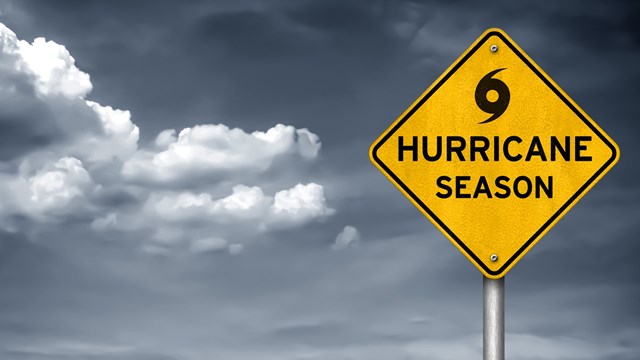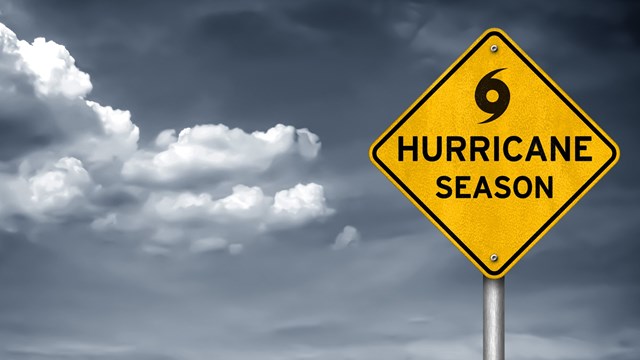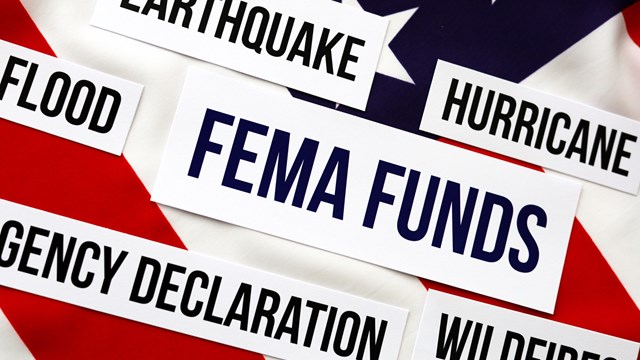New Jersey is the Garden State, but it also might be called the Heavy Rain, Flood and Storm State. "Not only do we have the coast, but we have hundreds of miles of rivers and bays, which does make us prone," says Hillary Cummons, a spokesman for the New Jersey chapter of the American Red Cross.
Floods are just one type of disaster: what about other types, both natural and manmade? Readers will remember the Blackout of 2003, which affected communities throughout the Northeast and up into Canada, as well as recent hurricanes in New Orleans, the Gulf Coast and Florida. Such events have surely made some of us wonder, "Could it happen here?"
And as far as terrorism is concerned, New Jersey may not be as likely a target as New York, Washington, D.C. or L.A., but there are places within the state that could easily attract violent extremists, such as Newark Airport or Atlantic City. Put this all together, and you'll know why New Jersey, like the rest of the country, has put together a system of emergency response and terrorism, centering on the state Office of Emergency Management (OEM), the Red Cross, and local law enforcement and public safety agencies.
The OEM
The New Jersey OEM operates under the supervision of the state police, and works closely with county and local first responders across New Jersey. During times of emergency, such as the aforementioned flood, the office maintains constant communications with local agencies called the Regional Operations Intelligence Center (ROIC, or "The Rock,") and the State Emergency Operations Center.
When the governor declares a state of emergency, as in October 2005, OEM directs emergency operations statewide. To manage incidents, it uses an Internet-based software known as "E Team," to which all New Jersey counties have access.
The State Police launched OEM, which is part of its Homeland Security Branch, in 2004, as part of a massive reorganization. Of course, the new emphasis on homeland security in the wake of 9/11 had repercussions everywhere, according to Neal Buccino, spokesman for New Jersey OEM.
At a more local level, New Jersey's municipal and county agencies have Mutual Aid Agreements based on each area's needs and resources.
Here Comes the Flood
Let's start with the most common danger New Jersey residents are most likely to face: floods. "In areas that are particularly prone to floods," says Buccino, "the OEM, the New Jersey Department of Transportation (DOT) and the New Jersey Department of Environmental Protection (DEP) team up with the U.S. Army Corps of Engineers to develop highly detailed maps, identifying exactly where and under what conditions flooding can occur."
Using this information, local and county officials can then formulate evacuation plans. Many of these plans include converting the area's large four- and six-lane highways to one-way evacuation routes, so that people can escape the danger more quickly.
Such plans are very important for vulnerable areas, such as barrier islands like Long Beach Island, and peninsulas like Cape May and Seaside Heights, says Cummons. Fortunately, he adds, experts nowadays can track storms as much as 36 hours in advance.
While planning for floods has been consistent, officials have been noticing a rise in the number of areas that are prone to floods, a phenomenon that some readers will no doubt attribute to global warming.
"In recent rainstorms, we've seen places have to be evacuated—Middlesex and Monmouth counties, for example—that have never had to be evacuated before," says Elaine Warga-Murray, formerly of EW Murray Associates, and now with Regency Management, the company founder and a property manager who has been active in emergency planning efforts.
This past October, flooding was such a problem that Acting Governor Richard J. Codey declared a statewide emergency. Flood warnings were issued for southern Monmouth and northern Ocean counties, as well as the Passaic, Ramapo and Metedeconk Rivers and the Rancocas Creek.
In Bergen County, 100 people were evacuated from Oakland, with another 100 evacuated from Lodi. In Passaic County, more than 80 people were evacuated from Wayne Township, and in Monmouth County's Ocean Township, over 100 people were evacuated in the area of a seniors' development.
To address the various emergencies caused by the flooding and heavy rainfall, the state police and OEM worked hand-in-hand with the New Jersey National Guard, the DEP, the DOT, other state agencies, local offices of Emergency Management, and "first responders" like municipal fire and police forces.
Hurricanes and Earthquakes—a Threat?
So flooding is a fact of life in parts of New Jersey. But what about more violent natural disasters, like hurricanes or earthquakes?
Bruce Swiren, regional earthquake and hurricane program manager of FEMA Region II, says a hurricane could affect the aforementioned islands and peninsula areas, northern coastal areas such as Monmouth County, "And bay areas like the city of Newark. Cape May County is quite vulnerable—it's quite low—and the area along Delaware Bay is vulnerable to flooding up the bay."
Thankfully, no hurricane has made landfall in New Jersey since the early part of the 20th century. A far more common path for hurricanes heading for the Northeast is to turn eastward and then graze the eastern part of Long Island.
"Our distance from the equator, the shallow waters off our shore, and our location in relation to the jet stream and seasonal high-pressure systems all make it extremely unlikely that New Jersey will face a hurricane stronger than Category 3," says Buccino.
So, for the time being, heavy rains, storms, and flooding are a much more likely scenario here.
But what about earthquakes? According to the New Jersey Geological Society (www.state.nj.us/dep/njgs/enviroed/eqrisk.htm), the Ramapo fault line runs through the state, and many minor earthquakes have occurred in the area—some of which received publicity because of their nearness to the nuclear power plant at Indian Point, New York. New Jersey has been somewhat lucky—the large New York City earthquake of 1884 didn't start along the Ramapo fault line, as experts thought back then. Instead, it started in Brooklyn.
New Jersey's building code has some provisions for earthquake-resistant design, but there are few requirements for retrofitting existing buildings. Just in case a major earthquake should ever shake the tri-state, the Geological Society recommends that residents secure items like hot water heaters and furnaces as well as heavy furniture to prevent fires and personal injury.
According to Douglas Copp, rescue chief of the American Rescue Team International (ARTI), a search-and-rescue organization based in Alameda, California, it's also advisable to know some earthquake survival strategies people in California learn from childhood. At the first sign of a tremor, position yourself next to a solid object, like a sofa, a car, or other bulky structure. If you are in bed when the tremors start, roll off the bed and use it as your solid object. Avoid stairways and the ground floor of buildings. And, says Copp, contrary to conventional wisdom for surviving a major quake, never take refuge in a doorway—if the doorframe falls forward or backward, the ceiling will drop from above; if the doorframe collapses sideways, the victim may be scissored between the door posts.
Natural or Manmade?
Floods, hurricanes and earthquakes are all natural disasters. What's the difference, in management terms, between a natural disaster, such as a flood or blizzard, and a manmade or utility-related one, such as a blackout?
"Though each situation is different, all natural and manmade emergencies present the same basic sets of problems," says Buccino. For example, natural disasters may cause power outages. Hurricanes and terrorist bombings may both require evacuations. That's why OEM's Emergency Operations Plan applies the same basic approach to managing all hazards.
"Fortunately," says Murray, "we haven't had very many manmade disasters other than car accidents and power outages." Most people, she believes, can deal with a blackout that lasts less than 24 or 48 hours as an "inconvenience," but beyond that, extremely serious problems can occur. Food spoilage, water shortage, social unrest, lack of heat in cold weather, and medical problems without the proper equipment can develop very quickly if the lights stay off for too long.
Whether a disaster is natural or manmade, its effects are much more severe for those who are old and infirm. That's why the state's Department of Health and Senior Services last July awarded $5.1 million in grants to acute care hospitals and health centers to help them respond to chemical, biological, radiological, nuclear and explosive incidents. Hospitals used similar funding in 2004 to buy protective equipment for health care workers, to renovate air intake systems, and upgrade decontamination units.
What Can Boards Do?
We've now heard about the different types of disasters that can threaten the state, and the statewide and municipal response. So what can condo boards and managers, community associations and other neighborhood groups do to make their residents aware of these emergency plans?
One way is to get in touch with the Red Cross. The New Jersey Red Cross, says Cummons, is always ready to work with these groups. "Particularly when they have their own clubhouse. We've taught them how to operate a shelter in their clubhouses. Many of their people have been trained to set up a shelter and take care of people's medical needs and mental health needs, and we will activate in time of emergency. It's a big help, especially in senior communities."
OEM's Buccino recommends that condo officials call their municipal police department and their county office of emergency management to learn about emergency plans for their area. OEM coordinators often speak to public groups on these subjects. Also, it is a good idea for condo officials to hold regular meetings with their residents on preparedness. Red Cross staffers are also happy to address community groups.
Unfortunately, not everyone is interested. Murray, who chaired a program on emergency preparedness at the annual conference of the New Jersey chapter of the Community Associations Institute (CAI) says, "When we offered this program at CAI, we did not have an overwhelming response. We encourage each of our communities to invite the Red Cross in, discuss emergency preparedness, and start a dialogue—but it's very difficult to convince people that they should have a plan."
Citizen Corps
If associations, building communities or individual residents want to organize on their own for emergencies, one of the best things they can do is to join New Jersey Citizen Corps, a group of organizations that help people prepare for disasters. Citizen Corps programs in the state include CERT (Community Emergency Response Teams), the Medical Reserve Corps, the Neighborhood Watch Program, Volunteers in Public Service and the Fire Corps. Members of these teams are taught first aid, fire suppression and other basic emergency response techniques.
Each of these teams has a different mission. For example, the Medical Reserve Corps uses the talents of many volunteer doctors, nurses and pharmacists. CERT teams give support to "first responders" such as firefighters and EMS, and provide assistance to victims and collect information at disaster sites. These often grow out of established groups such as neighborhood patrols, parent-teacher associations, auxiliary police and so on. New Jersey, Buccino says, actually has the second-highest number of CERT teams of any state in the country.
While the chances of true catastrophe being visited on any one person or community is slim, the worst-case scenario does sometimes happen, and it's those worst-case scenarios that individuals, associations, and communities must ultimately be prepared for. As Buccino says of his group's efforts, "Our emergency preparedness is constantly evolving and will always continue to evolve—it will never be finished."
For more information about the Citizen Corps programs, log on to http://www.state.nj.us/njoem/citizen.html.
Ranaan Geberer is a freelance writer living in New York City.







Leave a Comment